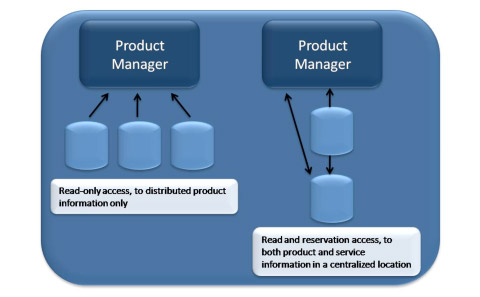
article page
| 1 | 2 | 3 | 4 | 5 | 6 | 7 |
- Lack of update synchronization: Typically, different systems (like Billing and CRM in the diagram above) are updated separately (often with considerable manual input) when new products are created.
- Lack of channel synchronization: There is no mechanism in place that ensures that all sales channels (in-house and outsourced customer care representatives, the company’s web site and mobile portals, in-house and partner retail stores, and so on) receive consistent information about the company’s products.
- Size and rate of growth of the product and catalogs: The rate of product and service creation and the size of catalogs in most CSPs is enormous, and growing rapidly. Non-automated methods of synchronizing product and offer information among multiple systems are simply overwhelmed by the volume and rate of change they must manage.
|
|
To understand how to achieve the improvements in customer experience it is important to first understand the barriers that must be overcome. |
|

- wasted effort. There is no timely or accurate global view of the product and service range offered by the company, denying strategic planning efforts of an important data source.
- Lack of network asset visibility: Product and service design and launch is done without visibility into the network assets and the impact upon them that the launch would create: there is only one-way communication from the product management group to operations, instead of an interactive two-way communication process between products and service capabilities (see below):
- Slow time-to-market: The creation of product catalog items along with
|
|
|
|

- Personalization and customization requirements: Personalization of both products, and the user interfaces by which subscribers configure them, adds further complexity that must be managed . This is true both for business customers, who increasingly demand custom-designed products, services, and offers; as well as residential customers, who are attracted to personalized services that meet their particular needs.
There are also a number of strategic issues that CSPs must address:
- Multiple systems / no single view of product and service catalogs: Product and service information is distributed through multiple systems – the lack of centralized catalogs means that there is limited visibility into products and services that have already been created, leading to duplication and
|
|

- the corresponding order entry software that is required to support these on each of the sales platforms is very time consuming. This in turn leads to significant time-to-market delays for new products.
- Fallout: The inconsistencies between various systems lead to fulfillment failures, undermining customer experience, and incurring cost as these are rectified.
The Solution: Unified Sales Management Based on unified Product and Service Catalogs
Independent software vendor ConceptWave offers a solution to the above problems, which uses a centralized product and service catalog, along with a solution architecture that supports rapid configuration and deployment of new products, offers, and services, to offer a rapid-deployment, low-TCO solution to the problems described above.
article page
| 1 | 2 | 3 | 4 | 5 | 6 | 7 | |
|




